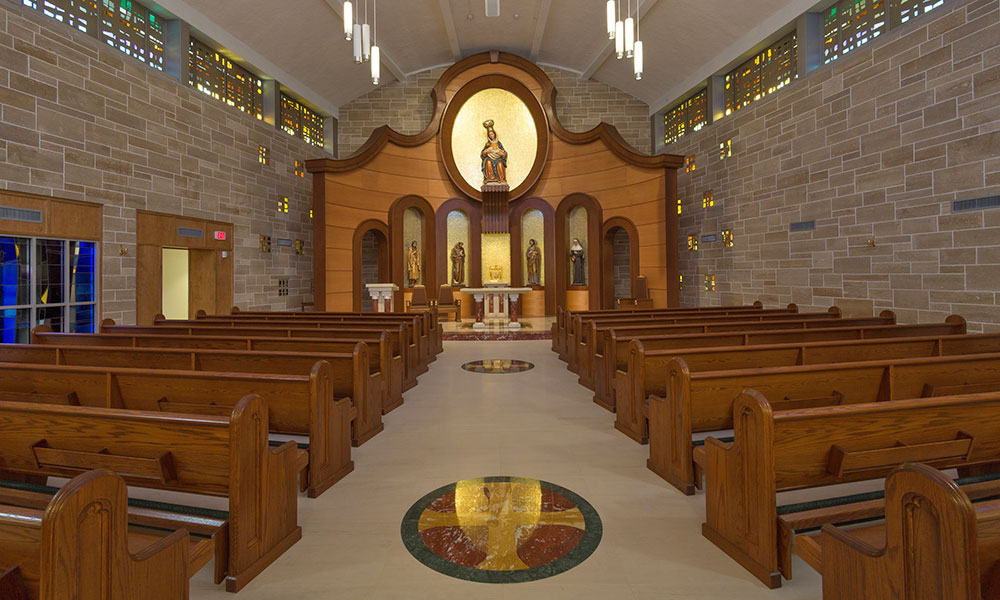The Saint Photios Greek Orthodox National Shrine
St. Augustine, Florida
February 10th, 2022
Description:
St. Photios Greek Orthodox National Shrine is an institution of the Greek Orthodox Archdiocese of America. Dedicated to the first colony of Greek's to come to America in 1768, the shrine displays exhibits demonstrating the life of early Greek people in America and the development of the Greek Orthodox Church, along with the St. Photios Chapel. The National Shrines' official website pays tribute to St. Photios the Great for his success as a theologian, supporter of missionary activity, and as a defender of the faith. The Chapel is filled with Byzantine-style frescoes and the special exhibits tell stories of the First Greek Colony in the New World through artifacts, photographs, and historical documents.
Official Website: https://stphotios.org/about/
Artifact 1
Pictured above are vestments gifted to the Shrine by Archbishop Iakovos of the Greek Orthodox Archdiocese of North and South America. The stole, maniples, genual, imperial robe, and small omophorion were part of his first vestments as a bishop, given to him by his spiritual mentor. Fully vested, a Greek Orthodox Bishop is an imposing figure, and there is symbolism attached to each piece of clothing relating back to the Old Testament. The style of vestments was developed during the Byzantine Empire (321 A.D.-1453 A.D.), and was pattered based on garments worn by the emperor. The bishop is considered an image of Jesus Christ, therefore, when leading worship services, the church has deemed that he resembles the King of Glory in all His Majesty. As the bishop vests himself in the clothing, all "worldly cares" are put aside as he recites verses from the Bible that disclose the meaning of each article.
Artifact 2
Pictured above are the articles used for Holy Communion. Holy Communion commemorates the Last Supper of Jesus with his disciples. The wooden bread seal is used on leavened bread and the central section becomes the Host. The lance then pierces the host as the priest reads the New Testament account of the soldier piercing Christ's right side to verify that he was dead. When the words "and at once blood and water poured out" (John 19:34) are spoken, wine and water are poured into the chalice. The Host is then placed on the paten, under the asterisk, symbolizing the Star of Bethlehem.
Exterior Image 1
Exterior Image 2
In Conversation Image 1:
The image above displays thousands of citizens gathered together at the Women's March on Washington, D.C. to protest for women's rights. They all came together and wore pink hats, which became a symbol of feminism called the "pink pussyhat". This was a unifying act and displays how visual influences can appear in fashion and clothing. This draws a connection to the bishop's vestments which are shown in Artifact 1. Each element of the bishop's uniform has symbolism that dates back to the Old Testament, which is similar to the symbolism of the pink hats at the women's march. Clothing has meaning and can be used to further movements and ideas. Both the pink hats and bishop vestments have a correlation to their motives and intentions which visually tell stories.
In Conversation Image 2
Above is an image of the National Shrine of Our Lady of La Leche in St. Augustine, FL. The image shows the inside of the shrine where mass is held. The location is a Catholic, Marian shrine and is the first shrine in the United States dedicated to Our Blessed Mother. The devotion to Our Lady of La Leche dates back to a 4th Century cave in Jerusalem. This site image draws a connection to The Saint Photios Greek Orthodox National Shrine because they both hold the mission of preserving a culture and sharing it with others. Both shrines are dedicated to a belief system in the hopes of teaching others through exhibits, artifacts, and historical stories.
In Conversation Passage ENG 202
In the poem One Hundred Love Sonnets: XVII by Pablo Neruda, the author describes that the way he loves this woman is different from the typical symbols of love. In stanza one, Neruda states: "I don’t love you as if you were a rose of salt, topaz, / or arrow of carnations that propagate fire: / I love you as one loves certain obscure things, / secretly, between the shadow and the soul." The author is describing symbols of love to which humans have assigned meaning and explaining that his love goes further and is more deep-rooted. The use of symbols connects to Saint Photios Greek Orthodox National Shrine because symbols are present in the shrine to show meaning and tell stories. Inside the shrine, many candles were present which symbolize the Light of God or the Light of Christ. Candles in the Greek Orthodox religion also have symbolic connotations of purity and cleansing due to the burning. All of these symbols, both in the poem and in the Shrine, have important connotations that help to tell stories and explain ideologies.
Creative Component
Using the graphic design website Canva, I created a poster of the Greek Constantinopolitan Creed that was written on the wall of The Saint Photios Shrine. This creed is important to the religion of the Greek Orthodox Church, and I believe it is important to share aspects such as these with the community in order for people to have a wider understanding and appreciation for different religions. By making this poster, it displays the creed's predominant role in the religion.










